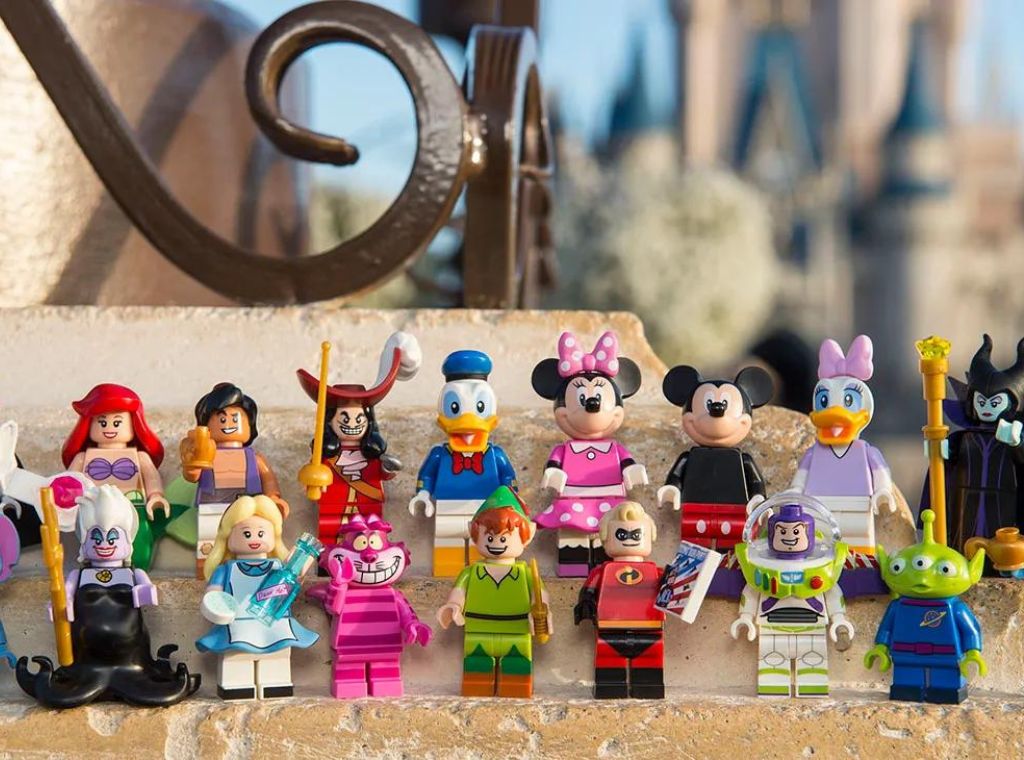Brand licensing Explained
In marketing and advertising, brand licensing is a strategic partnership between two companies where one allows the other to use its brand name, logo, or intellectual property to promote and sell products or services. This arrangement leverages the established reputation and consumer trust associated with the licensed brand to enhance the appeal and marketability of the licensee’s offerings. By associating their products with a well-known brand, companies can effectively differentiate themselves from competitors, attract new customers, and increase sales. Brand licensing also allows licensors to expand their brand presence into new markets or product categories without the need for additional resources or infrastructure. Overall, it is a powerful marketing tool that drives brand visibility, consumer engagement, and revenue growth for both parties involved.
Benefits of Brand Licensing
- Increased Brand Visibility: When a brand expands into new markets or product categories through licensing, it gains exposure to new audiences who may not have been aware of it previously. This increased visibility can lead to greater brand recognition and awareness.
- Revenue Generation: By licensing its brand to other companies, a brand can earn additional revenue through licensing fees and royalties. Essentially, it allows the brand to monetize its reputation and equity without directly manufacturing or distributing products in those markets.
- Cost-Effective Market Entry: Licensing offers a cost-effective way for brands to enter new markets without the need for significant investments in production facilities, distribution channels, or marketing campaigns. This reduces the financial risk typically associated with market expansion.
- Enhanced Consumer Trust: Consumers often associate licensed products with the quality and reputation of the original brand. By leveraging this trust, licensees can attract consumers who may be more willing to try new products or services associated with a brand they already trust.
- Brand Extension: Licensing allows a brand to extend its equity and values to new products or services that may complement its existing offerings. This enables the brand to cater to a broader range of consumer needs and preferences while maintaining consistency in its brand identity.
- Access to Expertise: Partnering with licensees who specialize in specific industries or markets provides the brand with access to expertise and resources that it may not possess internally. This allows for better adaptation to local market trends and consumer preferences.
- Global Expansion: Licensing facilitates international expansion by leveraging the local knowledge, expertise, and distribution networks of licensees in different regions. This enables brands to enter foreign markets more efficiently and effectively than if they were to do so alone.
- Risk Mitigation: By licensing its brand, a company can minimize the financial risk associated with launching new products or entering unfamiliar markets. The licensee assumes much of the investment and operational risks, allowing the brand to focus on its core competencies.
- Competitive Advantage: Associating with well-known and respected brands through licensing can provide a competitive edge in the marketplace. Consumers may perceive licensed products as superior or more desirable compared to similar offerings from lesser-known brands.
- Brand Loyalty: Licensing can strengthen brand loyalty among existing customers by offering them new products or services under a trusted brand name. It can also attract new customers who are drawn to the reputation and values associated with the licensed brand.
Process of Brand Licensing
- Identify and Select Licensees: Research potential markets and select reputable companies that align with the brand’s values and objectives.
- Negotiate Terms:Discuss and finalize key terms, including product scope, royalty rates, quality standards, and contract duration.
- Draft Licensing Agreement: Create a detailed contract that outlines all terms and conditions, including intellectual property rights and compliance requirements.
- Quality Control and Monitoring: Establish quality control measures and regularly monitor the licensee to ensure adherence to brand standards.
- Collect Royalties and Review: Track sales, collect royalty payments, and periodically review the partnership’s performance to decide on renewal or termination.
Preparation and Planning
- Identify Licensing Opportunities: Determine which products or categories could benefit from licensing your brand.
- Market Research: Conduct market research to understand demand, competition, and potential licensees.
Selection of Licensees
- Screening Potential Partners: Evaluate potential licensees based on their market presence, financial stability, manufacturing capabilities, and alignment with your brand values.
- Proposal and Negotiation: Present a licensing proposal to selected candidates, and negotiate terms such as royalty rates, contract duration, territory, and product categories.
Legal and Contractual Agreements
- Drafting the Agreement: Work with legal experts to draft a comprehensive licensing agreement that outlines all terms, including intellectual property rights, quality control measures, and termination clauses.
- Review and Signing: Both parties review and sign the agreement, ensuring all legal and operational details are clearly defined.
Implementation and Product Development
- Design and Production: The licensee develops the products, often in collaboration with the brand owner to ensure adherence to brand guidelines.
- Approval Process: Establish an approval process for prototypes, packaging, and marketing materials to maintain brand integrity.
Monitoring and Management
- Ongoing Oversight: Regularly monitor the licensee’s compliance with the agreement, including quality control, marketing, and sales reporting.
- Performance Review: Periodically review the performance of the licensed products and the overall partnership, addressing any issues and exploring opportunities for renewal or expansion.
By following these steps, brand owners can effectively manage the licensing process, ensuring that their brand is represented accurately and beneficially in the marketplace.
Negotiating Licensing Agreements
This involves discussions between the licensor (the owner of the brand) and the potential licensee (the company seeking to use the brand). Negotiations focus on determining the scope of the license, including the specific rights granted, territory, duration, and financial terms such as royalties or upfront fees.
Setting Terms and Conditions
Once negotiations are complete, both parties formalize the agreement by establishing clear terms and conditions. This includes outlining the rights and responsibilities of both the licensor and licensee, as well as any restrictions or limitations on the use of the brand.
Ensuring Brand Consistency and Quality
It’s essential to maintain the integrity and reputation of the licensed brand throughout the licensing process. This involves establishing brand guidelines and standards that the licensee must adhere to, including requirements for product quality, packaging, marketing materials, and customer service. Regular monitoring and enforcement are necessary to ensure that the licensed products or services meet the brand’s standards and maintain consistency across all channels.
Example of Brand Licensing

One of the most famous examples of brand licensing is the licensing of Disney characters. Disney has a vast portfolio of beloved characters such as Mickey Mouse, Minnie Mouse, and the characters from the Star Wars and Marvel franchises. Disney licenses these characters to various companies that produce merchandise such as clothing, toys, home decor, and other products.
For instance, Disney has licensed its characters to LEGO for the creation of themed building sets. This partnership has resulted in popular products like Star Wars LEGO sets and Marvel LEGO sets, which are highly sought after by fans of both brands. This licensing agreement benefits both Disney and LEGO by combining the strengths of both brands and expanding their market reach.
Challenges and Considerations in Brand Licensing
- Maintaining Brand Integrity: Ensuring that the licensee adheres to the brand’s quality and image standards is crucial to prevent any negative impact on the brand’s reputation.
- Market Fit: Assessing whether the licensed product aligns with the target market of the brand is essential to ensure the success and acceptance of the product.
- Legal and Contractual Issues: Navigating complex legal agreements and protecting intellectual property rights can be challenging and requires careful attention to detail.
- Revenue Sharing: Determining fair and profitable royalty rates and managing the financial aspects of the licensing deal is critical for both the licensor and licensee.
- Monitoring and Enforcement: Regularly monitoring the licensee’s use of the brand and enforcing compliance with the licensing agreement helps prevent misuse and ensures consistent quality.
Future Trends in Brand Licensing
- Digital and Virtual Licensing: With the rise of the metaverse and virtual environments, brands are increasingly licensing their assets for use in digital products, virtual reality (VR) experiences, and video games.
- Sustainability and Ethical Licensing: Consumers are becoming more environmentally and socially conscious, leading brands to license their products to companies that prioritize sustainability and ethical production practices.
- Collaborative Licensing: Brands are exploring more strategic and innovative collaborations, combining elements from multiple brands to create unique, co-branded products that appeal to a broader audience.
- Personalization and Customization: Advances in technology are allowing for more personalized and customizable licensed products, giving consumers the ability to tailor products to their preferences while still leveraging popular brand identities.
- Global Market Expansion: As markets in developing countries continue to grow, brands are increasingly looking to license their products and characters to local companies, adapting to regional tastes and expanding their global footprint.
FAQs Related to Brand Licensing
How to make officially licensed products?
To make officially licensed products, a company must first obtain permission from the brand owner. This involves negotiating a licensing agreement that outlines the terms, including the scope of the license, royalties, quality control, and duration. The licensee then manufactures the products according to the agreed-upon specifications and pays the licensor a royalty fee based on sales
What is the licensing strategy?
A licensing strategy involves leveraging a brand, trademark, or intellectual property to generate revenue through partnerships. It includes identifying suitable partners (licensees), negotiating terms that align with the brand’s goals, ensuring quality control, and expanding market reach without significant capital investment. The strategy focuses on maximizing brand exposure and revenue while maintaining brand integrity.
What is an example of a brand licensing agreement?
An example of a brand licensing agreement is the deal between Disney and various toy manufacturers. Disney grants these companies the right to produce and sell toys featuring characters from its movies. In return, Disney receives a percentage of the sales as royalties, ensuring that the products meet specific quality standards to protect its brand image.
What is licensing and types of licensing?
Licensing is the process by which a brand owner (licensor) grants permission to another party (licensee) to use its intellectual property (IP) under defined conditions. Types of licensing include:
Trademark Licensing: Using brand names, logos, or slogans.
Copyright Licensing: Using creative works like music, literature, or software.
Patent Licensing: Using inventions or technological innovations.
Franchise Licensing: Using a business model and brand name.
What is the difference between brand extension and brand licensing?
Brand Extension: Involves a company using its existing brand name to launch new products in different categories (e.g., a clothing brand launching a line of fragrances).
Brand Licensing: Involves a company allowing another company to use its brand name or other intellectual property to manufacture and sell products (e.g., a sports team licensing its logo to a merchandise manufacturer).
How is licensing different from branding?
Licensing: Involves granting rights to another company to use your brand, intellectual property, or product. It is a contractual arrangement that generates revenue through royalties or fees.
Branding: Involves creating and maintaining a unique identity for a product or company through names, symbols, designs, and consistent messaging. Branding is about building brand recognition and loyalty directly, rather than through third-party partnerships.





